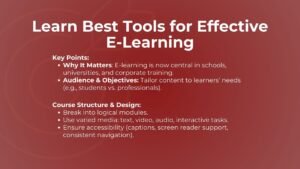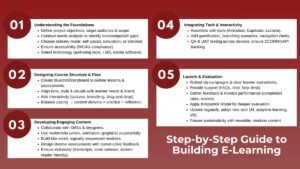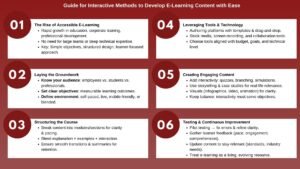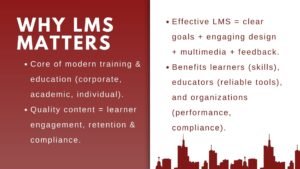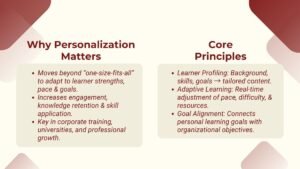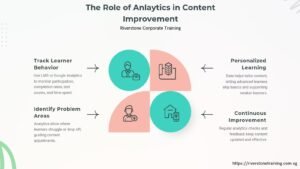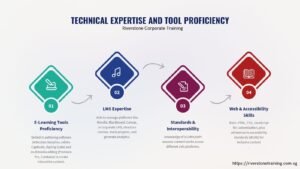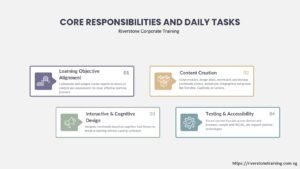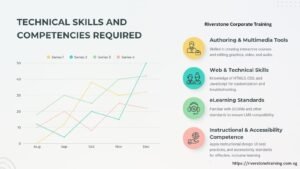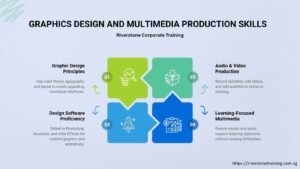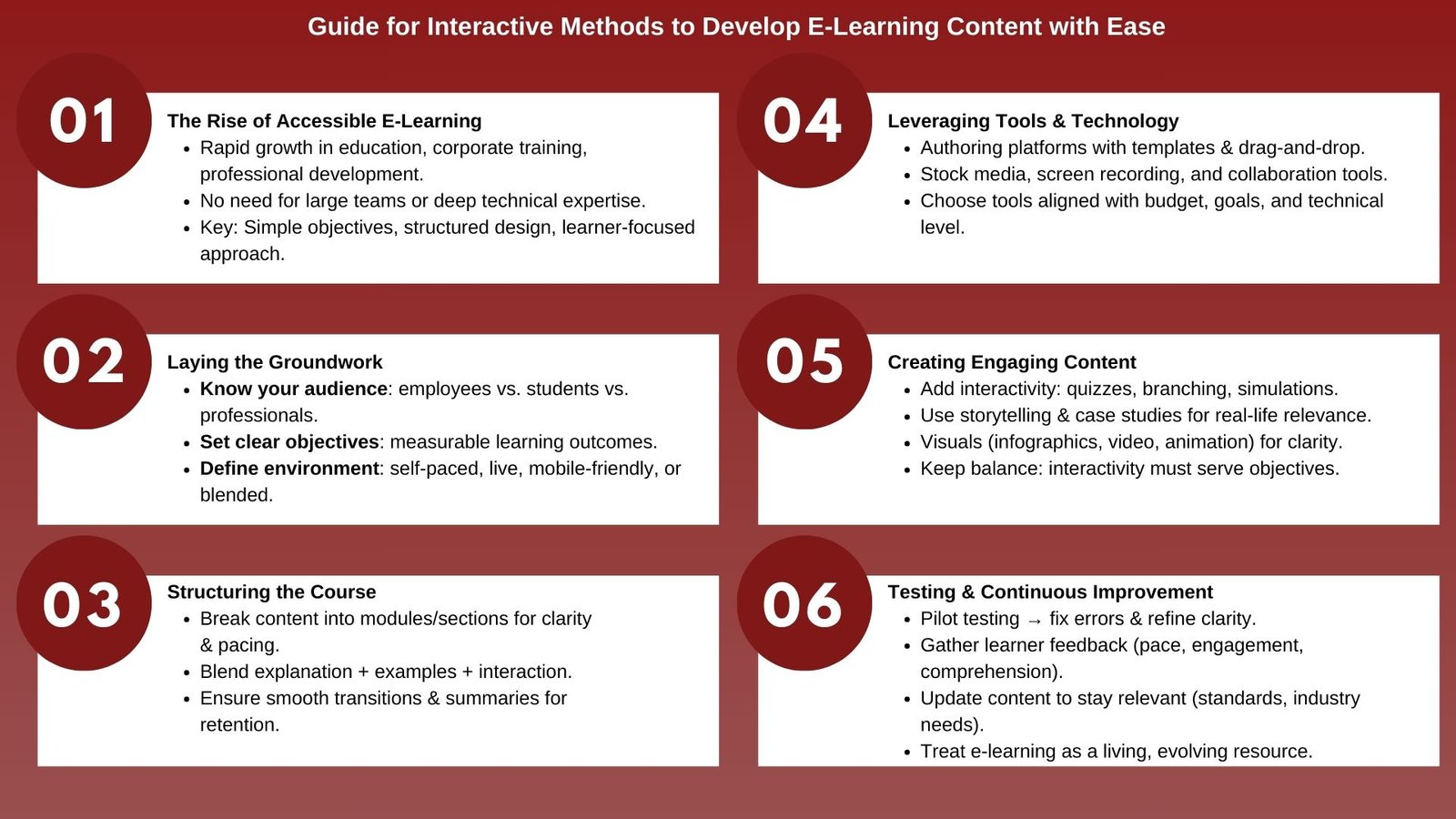
Interactive Methods to Develop E-Learning Content with Ease
Interactive Methods to Develop E-Learning Content with Ease
Introduction to Interactive Methods to Develop E-Learning Content with Ease
E-learning has become one of the most effective mediums of education, corporate training and professional development at a very fast rate. The need to provide learning has greatly increased as organizations and individuals require flexible and commensurate solutions. Nevertheless, to the many artists and trainers, coming up with e-learning materials may appear to be a task that is daunting, particularly with regards to the technical side, the pedagogical concepts, as well as the learning techniques.
The fact is that e-learning content development does not require any complexity. The development of powerful online courses does not require large teams and special technical knowledge under the proper process and frame of mind. This is especially true when integrating professional financial modeling skills for career advancement or learning from the best corporate training companies in Singapore for finance.
When planning to develop e-learning, the trick is to keep the learning objectives simple and in achievable steps, have tools that make the design and interactivity easier and most importantly retain a clear vision of the learning process. The purpose may be to develop a concise training program to teach the employees or a longer computer-based program to reach the audience all over the world, but in both cases, a structured and systematic design of the work results in an interest-evoking, contextual and self-guiding program.
By placing a central concern on the learner experience at the outset and taking advantage of technology to move beyond complexity seeking to create a style of professional e-learning content that does not come with additional useless misery, course creators can accomplish this without undue aggravation.
Laying the Groundwork: Understanding Audience and Objectives
Before creating any e- learning content, the initial procedure is to identify the target personality. Each learner will have various needs, preferences, and prior knowledge differences. Take the instance of a compliance training program to be administered to the employees, it would contain a different tone, complexity and level of interactivity than those of a course intended to teach university students or even industry professionals a certification program. Information regarding the learners becomes especially important when it comes to understanding how to incorporate a certain language, what language examples to apply, and the rate of presentation.
Learning objectives are also important to be set. The objectives serve as the backbone of designing the course by informing the choice of content, the delivery of the instruction and the assessment. Clear objectives ought to be stated as to what the learner will know or be capable to do at the end of the course, preferably stating measurable outcomes. In absence of objectives, the content writing process can run out of the target and the learning process becomes less effective.
Besides audience and goals, there is a learning environment that should be taken into consideration by creators. Will the program be self-paced or will live sessions be part of it? Will students get instructors they can ask questions? Will it be a content that can be read on a mobile device or it will take place mostly on desktop. These questions should be answered at the very beginning of the process since it will lead to an easier and more effective development process.
Structuring the Course for Clarity and Flow
After the setting of the objectives, one will then arrange the course in a proper format. Clear structure is necessary so that learners do not feel lost or rather stuck. It is always a good practice to divide the course into modules or sections each of which has its topic or skill to work on. This idea of modularity puts the content in a more digestible form and helps learners at their own pace without them necessarily feeling accomplished.
The modules are expected to contain a pleasant mix of explanation, examples, and interaction. Excessive amounts of pure theory can be too abstract in course, as too many activities without explanation may not require any actions. Perfect structure can be deduced to an introduction of concepts, then demonstrations or examples after which learners can get a chance to practice through quizzes, case studies, or interactive simulations.
The movements between modules or topics must be seamless and new topics should complement knowledge acquired in the previous module. Also, it is possible to introduce summarizing at the end of each module and this would aid a learner in consolidating learning and it would ensure that a learner does not forget important material. An organized course does not only allow a learner to navigate it more easily but also it becomes easier to update the course and maintain it over time by the creator of the course.
Leveraging Tools and Technology to Simplify Development
It is true that ease of access to e-learning development has increased over the past years due to the high availability of authoring tools and platforms to the users. They tend to have drag-and-drop editors, templates, and multimedia support, so the authors do not have to know much about code to create interactive and attractive courses. Banks of available quizzes, graphics and animations can be pre-built, further cutting development time, and can be found on some platforms as well.
The choice of the tool will rely on budget, the level of technical skills, and features. Example There may be a case where a small business would be satisfied with a very simple learning management system with only primitive design functionality, whereas a university department may operate a more advanced platform, providing capability to run complex simulations and analytics. The theoretical approach that should be considered first is the selection of a tool that matches the goals of the course and can be employed without the thorough training.
In addition to the authoring tools, one can assist in the streamlining of the development process using other technologies. Such stock media libraries also offer quality images, videos, and sound files, which will make the course attractive visual eye candy. The screen recording software enables fast production of demonstrations and tutorials, whereas collaboration platforms enable many contributors to work on the same delivered product without any difficulties. These resources are an opportunity to incorporate them into their work since content creators will not waste precious time struggling with the technical challenges but will concentrate on creating the interesting learning experience.
Creating Engaging and Interactive Content
The success of any course also depends on the content of the course, despite it being well formulated. When learners feel themselves as participants of the learning process, it increases the possibility of them remaining motivated and memorizing information. This implies the introduction of interactive features like quizzes, branching scenarios, and simulations that force the learners to arrive at a decision and be given feedback. Interactive content enhances engagement in addition to strengthening comprehension because it lets the learner practice the ideas in a risk-free and controlled setting.
Another technique that may make e-learning more engaging to the students is storytelling. Case studies or narratives provide learners with an explanation of how information will be applicable in their lives by structuring the information contextually in real life. The visual representations in the form of infographics, animations and video clips will also contribute to understanding better, particularly when the topic in question is rather complicated and hard to communicate with the help of mere words.
However, it should be noted that interactivity and multimedia should not merely be present to distract the learning goals but should facilitate the learning goals. Using animations or irrelevant media too much may blur the message and make the learner feel overwhelmed in overloading a course. The objective to consider here is the balanced notion of both rich engaging content and clear purposeful instruction that becomes supportive of the desired outcomes.
Testing, Feedback, and Continuous Improvement
A course in e-learning is never to be thought of as complete unless it has undergone rigorous testing. This includes looking through and making corrections, technical errors and to see that all interactive features work as expected. To optimise its effectiveness, a pilot group of learners will go through the course prior to launching it and give feedback as regards to clarity, pace and level of engagement. The feedback may show the weak points of the learners that it may need further explanation, examples, or practice activities.
We should have continuous improvement as a way of keeping e- learning content relevant and effective. The material may need to be updated with the passage of time or with respect to changes in industry standards, regulations or even goals of the organization. Observing the results of their learners and their feedback may be an option and help to understand what aspects of the course are performing well and what has to be changed. Considering the content of e-learning as a living element that continues to develop in the future, the developers can keep the content valuable even to the learners.
Conclusion: Turning Complexity into Simplicity
Riverstone E-learning content development can appear rather complicated, however, when one adopts a definite process, then everything becomes almost easy. Knowing the audience and the goals help form well-founded basics, whereas the structure of the course organisation helps to obtain a flow as well as ensure clarity. Technical aspects can be made simpler by use of the modern tools and available technology as the time and energy can be used to create an interesting and interactive learning environment. The quality and relevance of the contents are also complemented by being tested and constantly improved.
After all, simplicity of the creation of e-learning material boils down to preparation, organisational skills, and resourceful resourcefulness. With those elements in place, anyone can create professional and effective courses with impact and achieve learning goals regardless of their level of technical expertise. With the advancement of digital learning that has been observed, and is still progressing, the competence to create quality e-learning within a reasonable time will become a priceless asset to learners, trainers, and even organizations.



